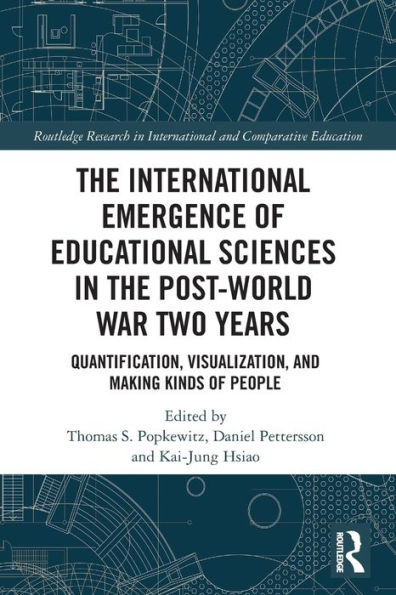The book examines how cybernetics and systems theories traveled and were assembled to turn schools into social experiments and laboratories for change. Explored are the new comparative technologies of quantification and the visualization of educational data used in the methods of mass observation. The sciences not only about the present but also the potentialities of societies and people in the psychologies of childhood; concerns for individual development, growth, and creativity; teacher education; and the quantification and assessments of educational systems. The book also explores how the categories and classifications of the sciences formed at intersections with the humanities, the arts, and political practices.
This informative volume will be of interest to researchers, academics, and postgraduate students in the fields of curriculum studies, the history of the social sciences, the history of education, and cultural studies, and to educators and school leaders concerned with education policy.
The book examines how cybernetics and systems theories traveled and were assembled to turn schools into social experiments and laboratories for change. Explored are the new comparative technologies of quantification and the visualization of educational data used in the methods of mass observation. The sciences not only about the present but also the potentialities of societies and people in the psychologies of childhood; concerns for individual development, growth, and creativity; teacher education; and the quantification and assessments of educational systems. The book also explores how the categories and classifications of the sciences formed at intersections with the humanities, the arts, and political practices.
This informative volume will be of interest to researchers, academics, and postgraduate students in the fields of curriculum studies, the history of the social sciences, the history of education, and cultural studies, and to educators and school leaders concerned with education policy.

The International Emergence of Educational Sciences in the Post-World War Two Years: Quantification, Visualization, and Making Kinds of People
272
The International Emergence of Educational Sciences in the Post-World War Two Years: Quantification, Visualization, and Making Kinds of People
272
Product Details
| ISBN-13: | 9780367569075 |
|---|---|
| Publisher: | Taylor & Francis |
| Publication date: | 05/06/2022 |
| Series: | Routledge Research in International and Comparative Education |
| Pages: | 272 |
| Product dimensions: | 6.00(w) x 9.00(h) x (d) |
